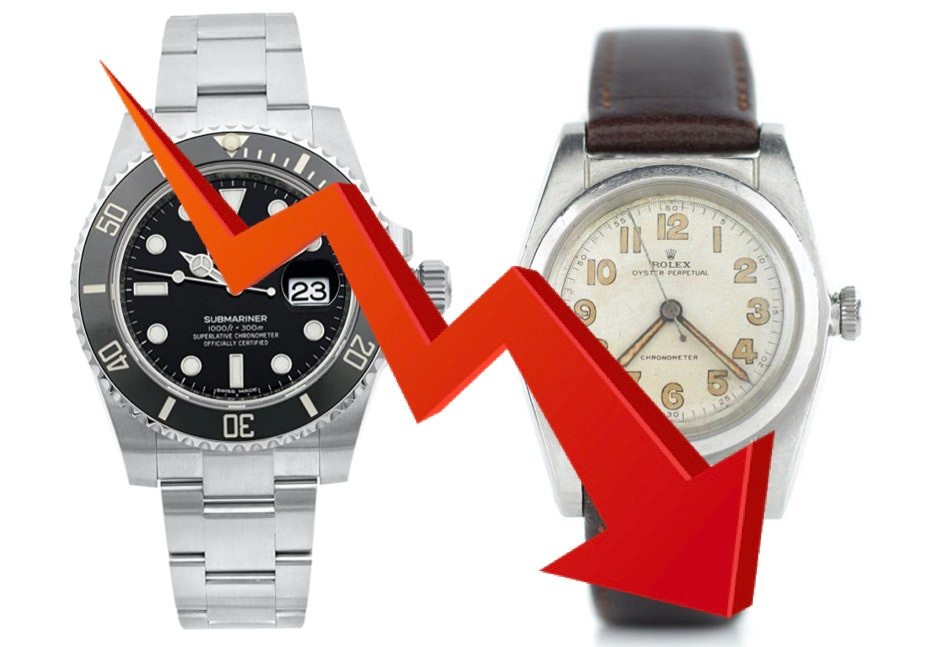Modern icons: 4 legends and the watches they wore
Ralph Lauren, Nina Rindt, Kanye West, and the Rolex you can make your own icon
This week, I wrote a guest post for Sprezza, a newsletter by friend-of-the-program Clayton Chambers. Because it’s for a men’s style audience, it’s more high level than the typically deep newsletter here — fun and different, in other words.
When Sprezza asked me to do a guest post, the pitch was to write about watch icons like James Bond and Steve McQueen.
To which I said: Why let all the old (dead) white dudes have all the fun?
Clayton replied: excellent question.
So, here’s an excerpt of my take on iconic watches with a modern spin. If you’re interested in men’s style, and how to dress, eat, drink, and think hop over to Sprezza and give Clayton a sub (and head there for the full article):
p.s. I even linked up his post about Hodinkee recently, if you need further proof of Sprezza’s bonafides.
Many already know that Sean Connery’s James Bond wore a Rolex (and Daniel Craig’s an Omega); Steve McQueen a Tag Heuer; and Paul Newman, the Paul Newman. Listen, these watches are great, but it’s past time we mint some new, modern icons.
So what makes a watch iconic?
In hopes of defining a better standard than the Supreme Court’s know-it-when-you-see-it maxim, it’s some combination of a famous person wearing a watch that’s also legendary in its own right.
Watches are an integral part of culture, but because they’re discrete and kind-of expensive, they often go unnoticed. But once you start to see them, you can’t stop. It’s more than just Pop Smoke rapping about his blingy Audemars Piguet or Drake bragging about his Virgil Abloh-customized Patek Philippe. Whether it’s an Apple Watch or rainbow Rolex, watches are an integral part of how people — not just celebs — communicate something about who they are to the rest of the world.
It’s time we listen.
Icon #1: Rolex Datejust
Okay, fine. It’s not the most exciting choice. But, like, the Rolex Datejust is the most popular watch of all time. From a vintage two-tone “ladies” DJ to the larger modern version President Joe Biden recently picked up.
Remember Paul Newman? As mentioned, his Rolex Daytonas might get all the attention — what with being auctioned off for millions of dollars and all — but he wore a simple vintage Datejust in The Color of Money.
How are you gonna argue with this guy in Persols and a Rolex DJ?
But I get it. Newman’s more salsa than sexy to many nowadays. However, the DJ has suffered no such fate; you’ll find it nowhere near the middle shelves of a fluorescently-lit grocery store piping adult contemporary through the PA system. Today, you’ll still find the DJ in all forms neatly tucked into glossy spreads in Vogue, GQ, and lookbooks from Aimé Leon Dore.
And on celeb Instagrams — so many celeb IGs.

It’s subtle, but also not. Trendy, but not really a trend. Out of fashion, but always in style. For what it’s worth, a vintage steel DJ like Newman’s is my pick from the seemingly endless array of vintage and modern options (“reference 1600” or “1601”, for those looking for some keywords to start their online shopping).
Once you clasp that supple jubilee bracelet on your wrist, trust me, you won’t be taking it off anytime soon. You’ll be telling anyone who listens how it’s not just a watch, but an item that means something to you.
That’s why the Rolex Datejust is an iconic pick: it’s one you can pick up for yourself. It might be to celebrate graduation; that new gig; getting jabbed with the covid-19 vax; or, just reading a mediocre newsletter.
Because at the end of the day, the most iconic watch is the one that means something to you, not anyone else.
Head to Sprezza for the full article, feautring the iconic watches of Ralph Lauren, Nina Rindt, and Kanye West.
👉 If you like watches, subscribe to get exclusive content you won’t find anywhere else delivered to your inbox every Sunday morning.
Now Featuring
Rescapement had a triple threat of guest posts this past week.
The Bubble(back) did burst
On survivorship bias and the beguiling market for stainless steel watches
Rapid price increases almost inevitably attract speculators, that is, people who hope to make a short-term return by acquiring an appreciating item. Such speculators like to view the item as an "investment," akin to stocks. A risk for these individuals, and other market participants, is that they succumb to an error known as "survivorship bias."
Examples abound of watches with astounding price increases, as described earlier. In 2007 the list price for a Rolex SeaDweller reference 16600 was $4,700. According to Chrono24, the current estimated value for this reference is $10,400, an appreciation of roughly 120% or ~6.3% annually (in comparison, the return for all stocks in the United States was roughly 9.3% over the same timeframe).
But have you ever heard of SOTHiS watches? In 2007 their Horus reference, featuring chronograph and date complications (based on a Valjoux 7750), was on the cover of Wristwatch Annual. Its list price was similar to the Rolex SeaDweller, at $4,500. SOTHiS was highly regarded — one of their references won a German "Golden Balance" award in 1998. I found two unsold examples of the Horus on eBay, the lowest was priced at $2,150. That is a loss of at least 48% (5.5% annually).
In order to determine the return on watches, we can't focus only on the highly successful brands such as Rolex. If we ignore the outcome for a brand like SOTHiS, which was liquidated in 2013, we are prone to over-optimism, just as the Army was biased in its beliefs about where WW2 airplanes were struck by bullets.
Read the full article by Brendan Cunningham, PhD.
A watch for the apocalypse
The world is burning. And we’re shopping for watches.
This past year and incoming eon (probably), I’ve had the privilege of slowly slipping off my precarious perch on the razor wire of sanity from the comfort of my apartment. I know I'm not alone in this, and since my free time consists almost exclusively of Netflix, thinking about watches and reading the news while the world seems to be crumbling at a higher rate than usual, I've thought a lot about what the perfect apocalypse watch would be.
You're right, it's a stupid thing to think about. What kind of a high-horse, pansy-ass spends these unprecedented times twiddling his thumbs and dreaming about things that tell time? And then blogging about it? Well, me. And quite likely you too, because you're here, reading a watch newsletter.
I know I have better things to be doing. My career was upended and caused a sharp pivot with no safety trampoline to bounce off of, amidst a worldwide deadly virus, social uprisings, and a healthy dose of economic turmoil. But those circumstances bring to mind "what if" questions, and being so entrenched in this rabbit hole of a hobby, it made me think about the watch I'd want on my wrist when the aliens arrive with lightsabers or the zombies learn how to run.
Read the full article by Josh Cameron.
A trace of tritium in the Rhone River
A study reveals the environmental impact of Switzerland's historic watchmaking industry
A study published in the Journal of Environmental Radioactivity in August 2020 looked at how residue from the application of tritium on watch dials has led to an increased level of radioactivity in the Rhone River downstream from watchmaking areas in France and Switzerland.
The study found that levels of tritium in the waters of the Rhone River immediately downstream from Lake Geneva and the city of Geneva measured anywhere from 1000 to 10,000 times higher than in other comparable riverine environments. This impact was observed to a lesser extent further downstream the Rhone River, where dilution counteracted the impact of tritium waste from both Geneva and the Jura Arc (the traditional home of Swiss watchmaking) farther north. Besides watchmaking, the other main source of tritium in the environment comes from atmospheric nuclear testing. This seems unlikely to have affected the Rhone, given that the closest nuclear testing to the area was far to the south in Algeria. Since most luminescent paints required zinc to act as a binder, researchers also examined the correlation of zinc and tritium in their core samples. A significant correlation was found, strongly suggesting that Geneva’s watchmaking industry was indeed responsible for the substance’s presence in the river.
Read the full article by Perth Ophaswongse.
This newsletter is mostly referral-driven, so if you liked it, please refer to a friend! 👇
—
Rescapement is a weekly newsletter about watches, mostly vintage. Subscribe now to get it delivered to your inbox every Sunday. Follow us on IG too.










